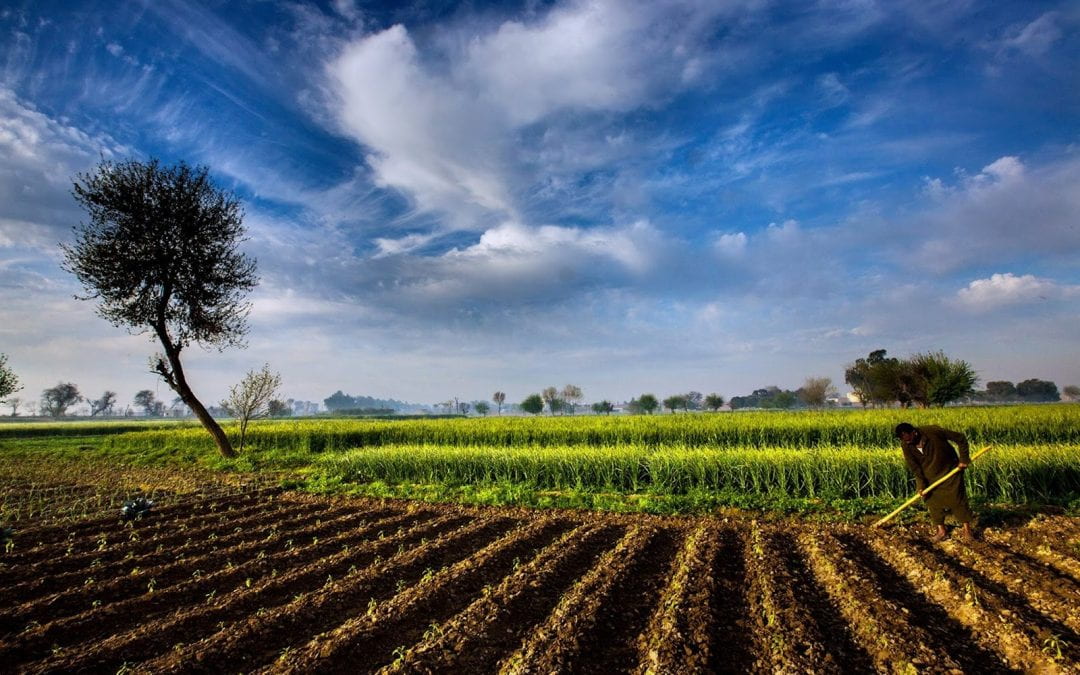
by zct01 | Nov 21, 2025 | Uncategorized
A Morning in Akkar
Somewhere in the hills of Akkar, a mother wakes before dawn. Her son is burning with fever, his tiny chest rising in short, frightened breaths.
She wraps him in a blanket, steps outside and faces the same impossible truth every family in her town lives with:
There is no clinic here.
No doctor.
No nearby care.
The closest medical help is more than an hour away—if roads are clear, if transportation can be found, if nothing goes wrong. For her, and for nearly half of Lebanon’s towns, simple illnesses can become life-threatening journeys. It is not just a healthcare issue, It is a daily, silent tragedy that shapes entire lives.
What the Data Shows but the Country Ignores
The visuals map this tragedy with painful clarity.
In the bar chart:
-
49.74% of Lebanese towns have no local resources nor nearby healthcare.
-
17.08% have no local facilities but can sometimes reach distant care.
Only 33.19% enjoy the basic dignity of accessible treatment.
The map shows Lebanon carved into colors that reveal the geography of abandonment.
-
Akkar, North Lebanon, Baalbek-Hermel, and Bekaa glow in urgent shades of red.
-
Beirut and Mount Lebanon rest confidently in green.
-
Though South Lebanon contains the highest danger percentage, it is covered with governorates that contain abundant amount of medical facilities and resources.
The visuals prove what families in rural regions already know: healthcare access in Lebanon is not just unequal—it is deeply, structurally unfair.
The danger zones are not random, they follow the borders of poverty, neglect, and distance.
A Country at a Crossroads
Yet Lebanon is not without hope. Around the world—and even within its own borders—innovative models show that remote and underserved communities can receive consistent care. The country stands at a crossroads where solutions are known, feasible, and within reach.
Lebanon can choose a future where no mother must gamble with her child’s life because of distance.
That future begins with a hybrid healthcare access model designed for real Lebanese terrain, real Lebanese families, and real Lebanese limitations.
Building the Path Forward
The path unfolds in two phases—immediate relief and lasting transformation.
Immediate Relief
-
Mobile clinics traveling weekly into remote towns.
-
Telehealth services connecting residents with doctors online.
-
Community health workers offering first aid, monitoring chronic diseases, and stabilizing emergencies.
These solutions bring healthcare to the people, rather than asking the people to chase it.
Long-Term Transformation
-
Expanding rural Primary Healthcare Centers (PHCs) in governorates painted red in the danger map.
-
Incentivizing private and nonprofit partnerships to open satellite clinics.
-
Improving transportation links so that even without a local clinic, emergency care is reachable.
This approach does not just fill gaps, it builds a system where every town becomes medically reachable, no matter how far, no matter how rural.
Why This Will Work
Proof already exists.
Organizations like MSF, the Lebanese Red Cross, and multiple NGOs have successfully delivered mobile and remote care across Lebanon’s hardest-to-reach regions. Telehealth has grown worldwide, saving millions in rural communities and the data that drives these charts, maps, and analyses pinpoint exactly where interventions must be prioritized.
The strategy aligns with Lebanon’s national health vision and mirrors international best practices in countries with similar geography and instability.
It is not theory.
It is tested, validated, and realistic.
Beyond the Diagnosis
The visuals do not simply highlight shortages, they illuminate where change must begin.
The Truth
-
Lebanon’s healthcare inequality is regional and predictable, not accidental.
-
Rural northern and eastern regions are in critical danger, lacking both local and nearby care.
-
Nearly half of Lebanese towns face severe accessibility barriers.
The Solution
-
Deploy mobile and telehealth clinics immediately to stabilize high-danger governorates.
-
Invest in long-term PHC expansion to ensure durable access.
-
Integrate transportation and healthcare planning, recognizing that distance is often deadlier than disease.
-
Maintain data-driven monitoring to continuously reallocate resources to evolving needs.
If Lebanon acts now and not later, the red zones can fade. Families can breathe easier. Lives can be saved.
A Different Dawn
One day, perhaps, a child in Akkar will still wake before dawn—but instead of gasping for breath, he will leap from bed to greet a new school day. His mother will no longer fear the distance to care.
Because care will finally be within reach. Because the map will no longer define who survives and who struggles. Because Lebanon will have remembered its forgotten towns.
That is the story the data tells. That is the story this country can still rewrite.
“We are alive the most when we are faced with adversity like no other.”

by jjh30 | Nov 21, 2025 | Uncategorized
Tourism has always been one of Lebanon’s brightest sectors, bringing life, movement, and opportunity to towns across the country. But when we look closely at where this activity is actually happening, an important pattern becomes clear: tourism is not spread evenly. It is concentrated intensely in just a handful of towns. And with that concentration comes one of Lebanon’s biggest hidden challenges: environmental pressure.
Restaurants, cafés, and hotels create jobs, attract visitors, and fuel local economies, but they also generate large amounts of waste, rely heavily on single-use plastics, and demand significant water and electricity. When these establishments cluster together in small areas, the strain on municipal systems becomes visible faster than the benefits.
To understand this pressure, we visualized the distribution of tourism establishments across the top 10 tourism towns in Lebanon. The result was striking. Two towns, Aabbesiyi and Baalbek stood far above the rest.
Aabbesiyi hosts 30 restaurants, 25 cafés, and 4 hotels. Baalbek hosts 39 restaurants, 10 cafés, and 2 hotels. Together, they make up 55% of all tourism establishments among the top towns.
This isn’t a small detail. This is the story.
These two towns carry more tourism activity, more food and packaging waste, more daily electricity and water consumption, and more visitor movement than anywhere else. And because the environmental impact is highest where the activity is highest, this concentration creates an opportunity that Lebanon has never fully used: beginning sustainability efforts where they matter most.
Instead of trying to build a national sustainability plan all at once, we can start with a focused, practical approach. Aabbesiyi and Baalbek are ideal places to pilot a Sustainable Tourism Starter Program, a coordinated effort that brings together cafés, restaurants, hotels, municipalities, and visitors under a simple goal: reducing the environmental footprint of the tourism experience.
Why start here?
Because here, the impact is immediate.
Because here, businesses are clustered close enough to benefit from shared guidelines and joint awareness efforts.
Because here, improvements don’t just make environmental sense, they make social and economic sense too.
Global sustainable tourism frameworks follow the same principle: begin where tourism activity is heaviest. It creates quicker results, easier monitoring, and a clearer path for scaling what works. And both Aabbesiyi and Baalbek already have something many towns lack: active business communities, strong visibility, and a steady visitor flow that makes sustainability initiatives more likely to succeed.
From shared sustainability guidelines to town-level branding like “Green Aabbesiyi” and “Eco-Baalbek,” these hubs can become the first Lebanese destinations to embrace environmental responsibility as part of their identity. With support from NGOs, municipal authorities, schools, and local partners, the program can grow beyond awareness campaigns into a committed, long-term approach to managing waste, water, energy, and visitor behavior. And once we see the impact, once the model proves itself, the same practices can be adopted by other towns, one step at a time.
Our visualization points to one undeniable truth: not all tourism towns carry the same environmental weight. Turning this insight into action gives Lebanon a real chance to move toward a greener tourism future, starting exactly where impact will be felt most.

by cth07 | Nov 19, 2023 | Uncategorized
by Charbel Hanna Daou (MSBA 24)
In the heart of the Caribbean, Jamaica faces a startling reality: its soaring intentional homicide rate is not just a statistic, but a looming shadow over the nation’s future. This crisis goes beyond mere numbers, threatening the very fabric of Jamaican society and shaking the pillars of stability and safety that its citizens rely on. It’s a call to action, demanding not just attention, but a deep dive into the root causes and a strategic battle plan to turn the tide against this wave of violence. The urgency to address and mitigate this issue couldn’t be more pressing, as the fate of Jamaica’s well-being hangs in the balance.
Delving into the Crisis
The alarming rise in Jamaica’s homicide rates over the past two decades is a cause for serious concern. The data shows an increase to 52.1 homicides per 100,000 people by 2021, a figure that not only stands out in the Caribbean region but also ranks highest on a global scale. This disturbing trend is indicative of deeper societal and systemic issues that need to be addressed with urgency and precision.
Strategic Approaches Aligned with SDGs
In response to this escalating crisis, two potential strategic solutions, in alignment with the United Nations Sustainable Development Goals (SDGs), present themselves as viable pathways to combat the high homicide rates:
- Increasing Government Health Expenditure (Aligned with SDG 3): This strategy focuses on the crucial role of health in society. By boosting government spending on health care, particularly in areas like mental health services and addiction treatment, Jamaica could tackle some of the underlying factors contributing to the high rate of homicides. The premise here is that better access to health services, including mental health care, can play a significant role in preventing violence and crime.
- Extending the Duration of Compulsory Education (Aligned with SDG 4): Education is a powerful tool for social change. By increasing the years of compulsory education, Jamaica could address several root causes of crime, including poverty and inequality. Education not only equips individuals with knowledge and skills but also opens up opportunities, promoting social mobility and reducing the likelihood of individuals engaging in criminal activities.
Learning from Global Experiences
The experiences of the Russian Federation and Colombia provide valuable lessons. Both countries have demonstrated a correlation between enhanced health expenditures, extended compulsory education, and a decrease in intentional homicides. In contrast, Jamaica’s relatively stagnant approach in these areas might be contributing to its high homicide rates. This comparison suggests that adopting similar strategies could yield positive results in Jamaica.
Government of Jamaica, Here’s What You Should Do
Given the evidence and the success of similar strategies in other countries, the following recommendations are proposed for Jamaica:
- Increase Health Expenditure: A substantial increase in health expenditure per capita, specifically by a minimum of $100, could significantly improve the quality and accessibility of health services. This step would not only address immediate health concerns but also contribute to the long-term goal of reducing violence and crime.
- Reform Education Policies: Strengthening and reforming education policies to extend the duration of compulsory education to at least 12 years is crucial. This change would have far-reaching effects, not only in educating the populace but also in providing them with better opportunities and reducing the likelihood of them resorting to crime.
In the face of its daunting homicide rates, Jamaica stands at a crucial crossroads. The journey ahead is challenging, but it’s also filled with opportunity. By adopting innovative strategies like increasing health expenditure and extending compulsory education, Jamaica isn’t just fighting crime; it’s reinventing its future. This bold move towards enhancing healthcare and education could be the key to unlocking a new era of peace and stability. Imagine a Jamaica where every citizen is empowered by knowledge and supported by a robust healthcare system. That’s the vision—a safer, stronger Jamaica, thriving in harmony and moving confidently towards a brighter tomorrow.

by rmr34 | Nov 18, 2023 | Uncategorized
Education:
Education is the cornerstone of development, unlocking doors to a brighter future. Education plays an essential role in achieving the Sustainable Development Goals (SDGs). The persistent challenge of education in African countries, particularly for adolescents, has always been an obstacle, contributing to the developmental lag experienced of these nations.
Adolescents out of school in 2012:
In 2012, a large percentage of adolescents were out of schools. Reasons vary but they can be summarized in
- Inadequate educational infrastructure
- Social disparities especially marriage
- Barriers to access in rural areas
- Shortage of qualified teachers
- Limited access to modern teaching materials
Adolescents-out-of-school rate in African Countries:
The map assures visually and represents educational challenge with larger red circles denote higher percentages where the adolescents-out-of-school rate is really high in comparison to other countries.
Early Marriage
The high marriage rates in often limit access to formal learning opportunities. The social expectations surrounding marriage can act as a barrier, particularly for young girls, impeding their ability to complete their education. However, fast forward to 2022, a shift in the educational landscape had occurred. In 2016, marriage rates for girls under 15 stood at a shocking 93%. However, a line chart traced a journey of change from 2016 to 2017, witnessing a substantial drop to 62%. The trend continued into the years 2020 and 2021, where the marriage rate further decreased to a promising 29%.
Now, this shows the rate of out-of-school adolescents that had fallen. Hope began to blossom becoming an inspiration of progress in the (SDGs).
Correlation between Marriage and School enrollment:
The story unfolded with a realization – the decline in early marriages played a key role in fostering educational empowerment with a correlation between decrease in marriage rates and increase in school enrollment. Yet, a small number is still beyond the ideas of education.
Urgent Call for action:
- Community Engagement and Awareness
- Investment in Infrastructure
- Government Policy Reforms
- Teacher Training and Support
- Partnerships with NGOs and Corporations
- Monitoring and Evaluation
The tale of progress in African education reminds the world that transformation is possible when communities unite, prioritize education, and nurture the dreams of their youth…

by hhk25 | Nov 8, 2023 | Uncategorized
A world where economic diversification is often seen as the path to financial stability, Lebanon stands out as a nation that has primarily relied on non-agricultural sectors for its economic sustenance. Despite its rich agricultural potential, the country has chosen to prioritize other industries. As Lebanon grapples with a severe economic crisis, it’s crucial to examine the consequences of this strategy and consider whether a renewed focus on agriculture could offer a more resilient path forward.
The main problem Lebanon is currently facing!
- Lebanon is currently not placing sufficient emphasis on the agriculture and aquaculture sectors as potential revenue sources.
- This neglect comes at a time of economic hardship, marked by a consistent decline in GDP over the years.
Problem Evidence:
- Despite the presence of fertile land for agriculture and planting, there is a notable absence of qualified and active employees in this sector, as evidenced by the consistent decline in the percentage of the workforce engaged in agriculture over the years. (the percentage decreases from 5.3%in 2000 to 3.8% in 2021 low percentage of the total employment)
- the contributions of forestry and aquaculture to the GDP have been on a continuous decline. (The percentage decreased from 6.3% in 2000 to 1.4% in 2021, indicating a relatively low contribution)
- Lebanon’s GDP growth has been consistently decreasing over the years, reaching a troubling -7% in 2021.
Potential solutions
- Placing greater emphasis on the agriculture and aquaculture sectors by providing support to local farmers and expanding cultivation areas to meet domestic demands while also generating surplus for export.
- Additionally, increasing the number of professionals in this field can be achieved by encouraging universities to prioritize agriculture-related majors and motivating students to pursue studies in this area.
This will result in:
- Increased revenue generation and improvements in Lebanon’s GDP after expanding cultivation areas and supporting the agriculture and aquaculture sectors.
Real life success story:
In the summer of 2023, two Lebanese citizens seized the opportunity to cultivate a green, organic farm in the fertile lands of southern Lebanon. Taking advantage of the region’s fertile soil, expansive agricultural land, and favorable weather conditions, they cultivated a variety of fruits and vegetables.
With an initial investment of $1,500, they managed to yield a net profit of $5,000 in just four months. This success story highlights the untapped potential of agriculture and organic farming in Lebanon.
The successful cultivation they were able to get!!!



This solution is validated by the real case example presented at the beginning:
Based on the real-life example, if Lebanon gave more importance to the agriculture sector, this would lead to an increase in domestic production. This, in turn, could serve as a partial solution to the economic and financial crisis the country is facing. Moreover, it would also create more employment opportunities for Lebanese citizens, thereby contributing to a more sustainable and diversified economy. Emphasizing the agriculture sector can play a vital role in bolstering the nation’s economic stability and reducing its reliance on other sectors.
finally, emphasizing agriculture in Lebanon as a means of economic revitalization directly supports SDG 8’s objectives by creating decent work, fostering sustainable economic growth, promoting economic diversification, and facilitating skills development in the agricultural sector.







